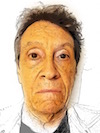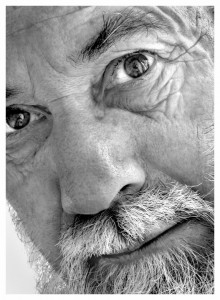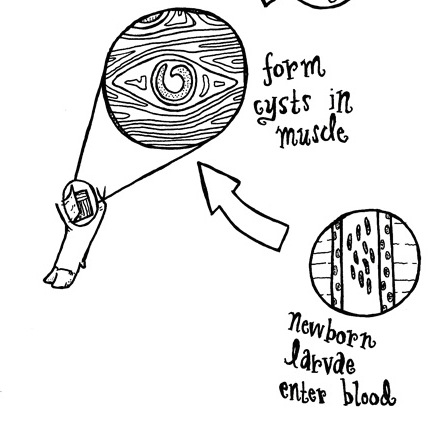 [This is the complete text of the keynote address delivered to the annual Southeast Regional Conference of the Society for Photographic Education on September 19th, 1997, at the Penland School of Arts, Penland, North Carolina. It was published in Exposure, the journal of the Society for Photographic Education, as part of a special “Teaching/2000” issue devoted to pedagogical concerns (Exposure 32:2, Jan. 1999, pp. 3-10). Part 1 appears below; click here for Part 2, and here for Part 3. — A. D. C.]
[This is the complete text of the keynote address delivered to the annual Southeast Regional Conference of the Society for Photographic Education on September 19th, 1997, at the Penland School of Arts, Penland, North Carolina. It was published in Exposure, the journal of the Society for Photographic Education, as part of a special “Teaching/2000” issue devoted to pedagogical concerns (Exposure 32:2, Jan. 1999, pp. 3-10). Part 1 appears below; click here for Part 2, and here for Part 3. — A. D. C.]
•
Toward the Empty Place:
On the Spiritual in Teaching
Good evening, ladies and gentlemen. I’d like to express my thanks to Tom Braswell and the planning committee in charge of this Southeast Regional SPE Conference for inviting me to participate, and for honoring me with the request that I deliver this keynote address tonight.
When he first contacted me concerning this talk, Tom told me that the theme for this conference was something decidedly unfashionable — “The Spiritual in Art” — and asked me if I would speak to that subject. Foolishly, perhaps, though not deceitfully, I agreed. And I did try, repeatedly, to draft something on that subject suitable to the occasion, but it all came out sounding either archaic or pompous, sometimes both at once.
Eventually I realized that I’m not a working artist in any medium now, and haven’t been for several decades. Nor am I a teaching artist, as are many of you here. I’m an ex-musician who at best aspired to mediocrity in that medium, nowadays a sometime poet and fiction writer and an occasional amateur picture-maker. Frankly, were I you I wouldn’t listen to myself, with those minimal credentials, opine on the spiritual in art.
What I am now, and have been for almost thirty years, is a professional wordsmith, a prose craftsman, a working critic with twenty-seven years of university-level teaching experience. If I have anything to offer you of substance and usefulness, it will be on the subject of teaching the history and criticism of photography in a photo-education context, our common ground. What I have to say on that score will address not generalities but the specifics of my own spiritual crisis as a teacher.
So I have taken the liberty of redefining my topic tonight as “Toward the Empty Place: On the Spiritual in Teaching.” Some of this, I think, pertains to the making of art as well as the teaching of it. I hope you’ll find something germane to the conference theme in my remarks — and, if you don’t, I hope to prove sufficiently entertaining that you’ll forgive my straying from the point.
 I should add here that this is the first SPE conference, regional or national, that I’ve attended since 1986, when I resigned formally from the organization, sending to the SPE’s then Board of Directors and the editors of its several publications an open letter explaining my departure, which they decided not to make public. I’m here this weekend to see what, if anything, has changed for the better since then, but I haven’t renewed my membership to date. So this is my first address to any component of the SPE as a non-member.
I should add here that this is the first SPE conference, regional or national, that I’ve attended since 1986, when I resigned formally from the organization, sending to the SPE’s then Board of Directors and the editors of its several publications an open letter explaining my departure, which they decided not to make public. I’m here this weekend to see what, if anything, has changed for the better since then, but I haven’t renewed my membership to date. So this is my first address to any component of the SPE as a non-member.
For the purposes of this talk tonight, suffice it to say that I left because I no longer found the organization and its activities conducive to the kinds of dialogue with my colleagues in teaching that I’d discovered there when I joined a decade earlier, circa 1976. I’d been missing that interaction for awhile before I left, so, practically speaking, my departure changed little. I know I’m not alone in having severed those ties. I can name dozens more who’ve fallen away from this organization and stopped coming to its meetings — senior figures, people from whom I felt I had something to learn as a teacher, whose absence from these conferences made it easier for me to leave. But that’s another discussion.
A few years later, toward the end of the 1980s, I found myself growing increasingly disheartened with the progressive deterioration in the quality of education offered by the university department in which I taught, and the concurrent decline in the energies and involvement of its students. My experiences as a doctoral candidate in Media Studies in another division of that university made it plain that the problem was systemic, not just restricted to undergraduate courses or fine-arts programs. My colleagues elsewhere in that institution — and, indeed, in photography programs and other courses of study across the country — reported similar observations, which, though reassuring in a way, hardly proved cheering.
To make a long story short, by the spring of 1993 I found myself walking unenthusiastically, even reluctantly, into classrooms full of students who seemed to have no particular reason to be there, and no real desire to be in weekly contact with me. I’d vowed years earlier to stop teaching if ever I felt I had nothing to give, and there I was, dispirited. So I finished out the semester as best I could, made a last futile gesture to provoke the university administration into changing course, and left.
Well, it’s four and a half years later. During that interval I’ve guest-lectured in some classes, and taught a few workshops here and abroad, both within and without the academic environment. I find the same conditions everywhere I go. Indeed, the only vital, enthusiastic and aggressive students I’ve encountered anywhere in recent years are those I met last winter in the advanced classes taught at Arizona State University in Tempe by Bill Jay, the bête noire of one faction of this organization. That doesn’t surprise me, though it may give you pause for thought.
So, since 1993, I haven’t taught a full course anywhere. What I’ve found out is that I miss it, terribly, like the best parts of a failed or exhausted marriage. Teaching lies at the core of just about everything I do professionally, so I have other outlets — especially my writing — for some of those urges and energies. But the theater of the classroom offers something unavailable elsewhere, and I want to find a role for myself in it once more.
It didn’t take me long to realize I’d teach again — one academic year of letting go, to be precise, during which I spent most of my time in residencies here and abroad, writing and researching, getting some distance on things. When I came to that understanding, I knew I had to start from scratch — which, for me, meant looking at my own history as a student, and at the models of teaching I’d absorbed and, perhaps uncritically, reflected in my own practice.
By my own lights, though my grades were generally better than average, considerably more so in subjects that interested me, I was a lousy student right up through graduate school in the mid-1960s. Fundamentally, though I’d figured out how to get through school, I didn’t know how to learn from other people. This was due more to family-based emotional problems irrelevant here than to any principled commitment to the activity that educator Herbert Kohl calls “not-learning,” about which I’ll say more in a few minutes. Indeed, I didn’t even know yet how to learn from myself.
Somehow, in the years between 1967, when I left graduate school, and the late ’70s, I learned how to learn — first from myself, then from others — and began to learn how to pass it along to others of my cohort, how to teach. I began my teaching career, such as it’s been, in 1970, in an adult-education seminar on the criticism of photography at the New School for Social Research in New York City, a seminar that ran for several years and through which perhaps a hundred people passed, some of whom subsequently entered the field, Sally Stein among them. Photography had not yet been fully academicized, or museumized. It was still an outsider art form, and it drew outsiders like myself to it — loners, rebels, oppositional types, political activists, eccentrics — whose weird energies gave photo studies in that period a distinct crackle and charge.
![]() After that I taught here and there, on one-semester or one-year appointments — art institute and university (graduate and undergraduate), independent workshop, all the variants — until I landed at New York University in the late ’70s, where I taught steadily but (by my own choice) part-time on every level from undergraduate to doctoral until my aforementioned departure in 1993. In 1982 I entered a doctoral program there myself and discovered, to my delight, that at the age of 39 I had indeed learned how to learn — that I could enter any educational context, extract from the faculty and my fellow students everything of use to me (including ideas they didn’t know they had, and others I hadn’t known I needed), and could also return that energy in kind, in ways that furthered the work of my teachers as well as my classmates. Call me a late bloomer, but at least I did blossom.
After that I taught here and there, on one-semester or one-year appointments — art institute and university (graduate and undergraduate), independent workshop, all the variants — until I landed at New York University in the late ’70s, where I taught steadily but (by my own choice) part-time on every level from undergraduate to doctoral until my aforementioned departure in 1993. In 1982 I entered a doctoral program there myself and discovered, to my delight, that at the age of 39 I had indeed learned how to learn — that I could enter any educational context, extract from the faculty and my fellow students everything of use to me (including ideas they didn’t know they had, and others I hadn’t known I needed), and could also return that energy in kind, in ways that furthered the work of my teachers as well as my classmates. Call me a late bloomer, but at least I did blossom.
During those same years, I also received substantial feedback that told me I’d learned how to teach. How had that happened? I’d never had a single course of formal study in educational methodology. Obviously, then, it had come from independent study, practice, observation of others, and reflection on my own experience — especially thinking about those who’d taught me, in particular the two teachers I’d truly loved.
The first was Miss Gloria Salimondo: P.S. 41, Greenwich Village, 1954, sixth grade, age 11. She was young compared to the school’s standard complement of intimidating battle-axes (probably in her late twenties), and kind, and soft-voiced, and I thought she was beautiful. I was in love, obviously, puppy love, so I hung on her every word uncritically — to such an extent that more than forty years later I still overcook what little pork I eat in order to kill those dreadful trichina worms she drew nestling into our layers of muscle tissue.
And it took me twenty years to discover that I’d unlearned the habit of crossing my legs because I’d devotedly memorized her schematic of the circulation system, along with her warning about the dire consequences of closing off sections thereof with pressure — she sketched little trapdoors to illustrate the serious health problems that could result, culminating, if I recall correctly, in gangrene. Delightful memories, clearly, but not much to carry into the classroom as a teacher: If you want your students’ love, or need it in order to communicate with them, you’re in deep shit from the git-go.
•
This post sponsored by a donation from Beverly Spicer.
•
 Special offer: If you want me to either continue pursuing a particular subject or give you a break and (for one post) write on a topic — my choice — other than the current main story, make a donation of $50 via the PayPal widget below, indicating your preference in a note accompanying your donation. I’ll credit you as that new post’s sponsor, and link to a website of your choosing. Include a note with your snail-mail address (or email it to me separately) for a free signed copy of my 1995 book Critical Focus!
Special offer: If you want me to either continue pursuing a particular subject or give you a break and (for one post) write on a topic — my choice — other than the current main story, make a donation of $50 via the PayPal widget below, indicating your preference in a note accompanying your donation. I’ll credit you as that new post’s sponsor, and link to a website of your choosing. Include a note with your snail-mail address (or email it to me separately) for a free signed copy of my 1995 book Critical Focus!
 But wait! There’s more! Donate now and I’ll include a copy of The Silent Strength of Liu Xia, the catalog of the 2012-13 touring exhibition of photos by the dissident Chinese photographer, artist, and poet, currently in her sixth year of extralegal house arrest in Beijing. The only publication of her photographic work, it includes all 26 images in the exhibition, plus another 14 from the same series, along with essays by Guy Sorman, Andrew Nathan, and Cui Weiping, professor at the Beijing Film Academy.
But wait! There’s more! Donate now and I’ll include a copy of The Silent Strength of Liu Xia, the catalog of the 2012-13 touring exhibition of photos by the dissident Chinese photographer, artist, and poet, currently in her sixth year of extralegal house arrest in Beijing. The only publication of her photographic work, it includes all 26 images in the exhibition, plus another 14 from the same series, along with essays by Guy Sorman, Andrew Nathan, and Cui Weiping, professor at the Beijing Film Academy.








Leave a Comment